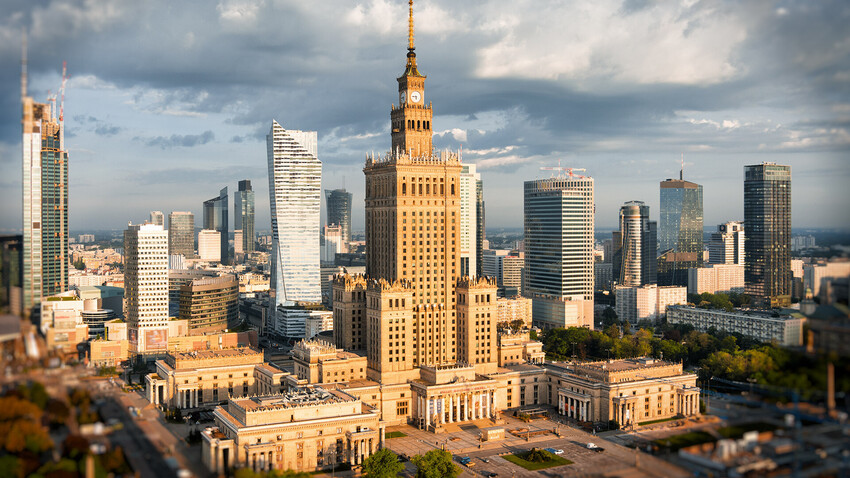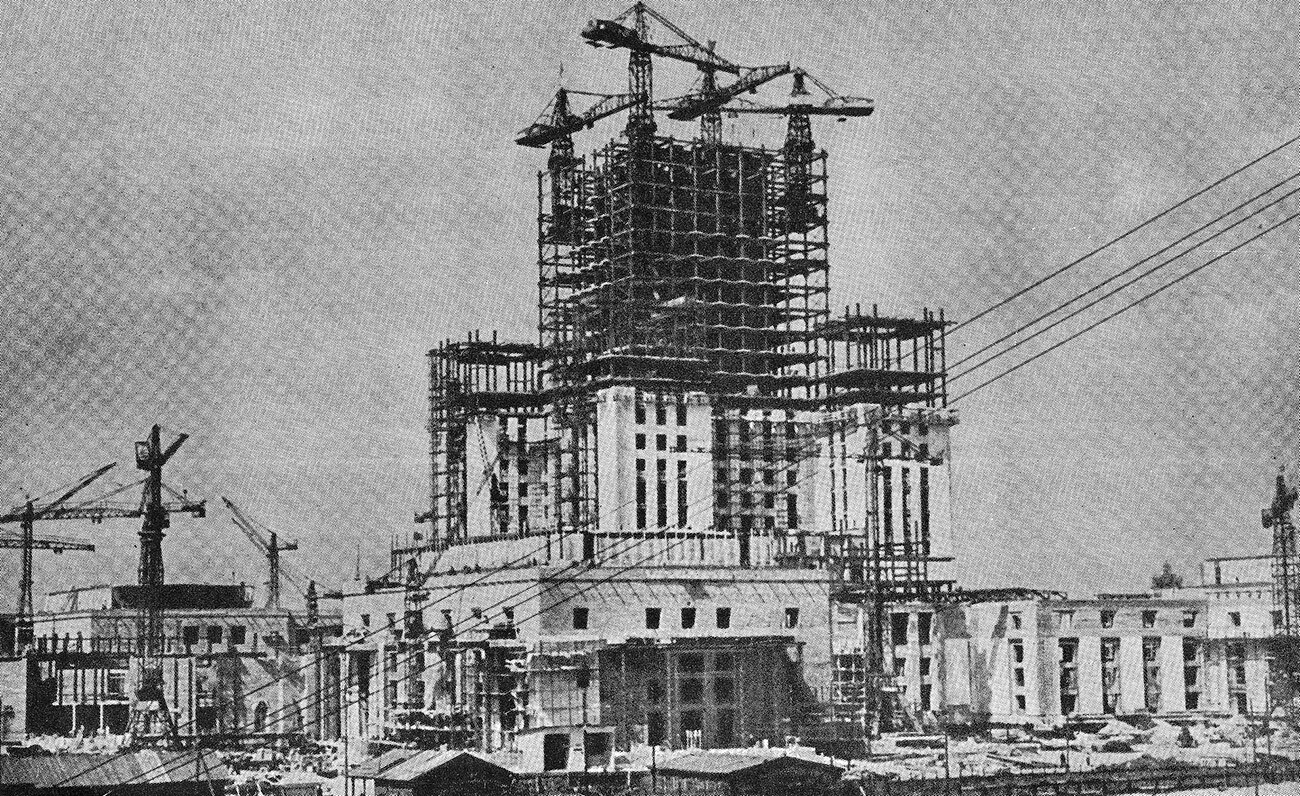
The idea of the construction personally belonged to Joseph Stalin. It was first announced in 1951. After World War II, the Polish People's Republic became an ally of the Soviet Union. Moscow also took an active part in the reconstruction of destroyed Warsaw (and other Polish cities): hence the decision to donate a monumental building, which also had an important ideological significance. The project was designed by Lev Rudnev, one of the co-authors of the main building of the Moscow State University on Vorobyovye Gory (‘Sparrow Hills’). The Warsaw Palace resembles this particular Stalinist high-rise most of all.
The agreement between Poland and the USSR on the construction of the "gift" was signed on April 5, 1952, and construction work began on May 1. Three thousand five hundred Soviet workers arrived in Warsaw and were accommodated in a specially built area of the city. In addition to them, 4,000 Poles were also employed. All expenses for the materials were paid by the USSR. For example, the facade has ceramic tiles made by special order at a Ural factory. Soviet engineers supervised the work. Despite the fact that the high-rise was designed according to the canons of Stalin's architecture, some elements refer to Polish architectural monuments; for example, the top of the clock tower is reminiscent of the Town Hall tower in Krakow.

Shortly before the official opening, Soviet General Secretary Nikita Khrushchev and Indian Prime Minister Jawaharlal Nehru, with his daughter Indira Gandhi, visited the building. The opening ceremony of the palace was officially held on July 22, 1955.
The building has 46 floors, including two underground. It has a total of 3,288 rooms inside. The palace once housed the Polish-Soviet Friendship Center, the Institute of Social Sciences, as well as the editorial offices of publishing houses of Marxist-Leninist classics. Now, it houses several museums, theaters and educational institutions; a cinema hall and a swimming pool, as well as a congress hall with almost 3,000 seats. On the 30th floor, at the level of 114 meters above ground, there is an observation deck. In February 2007, the Palace of Culture and Science was included in the officially register of protected architectural monuments. It is the only surviving example of socialist architecture in the Polish capital.
Dear readers,
Our website and social media accounts are under threat of being restricted or banned, due to the current circumstances. So, to keep up with our latest content, simply do the following:
If using any of Russia Beyond's content, partly or in full, always provide an active hyperlink to the original material.
Subscribe
to our newsletter!
Get the week's best stories straight to your inbox